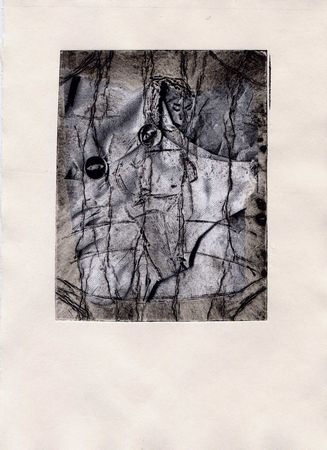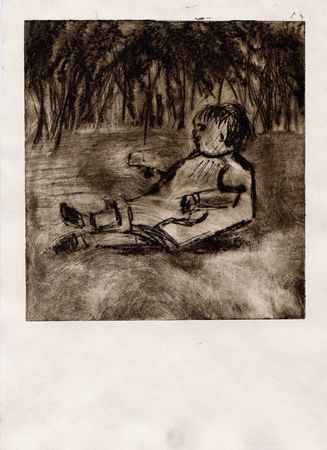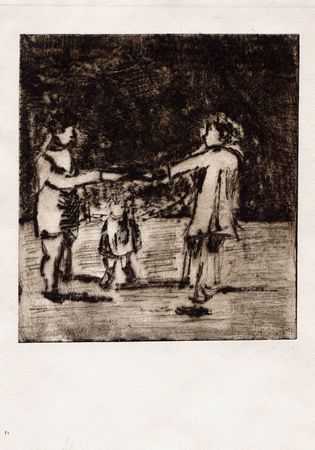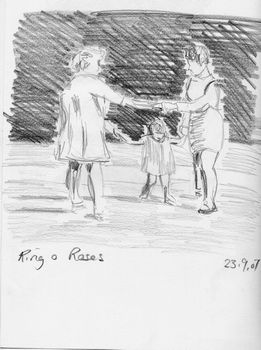
Chine colle print of doll’s dress with drypoint etching. I’m experimenting with using chine colle to layer images of childhood.

Chine colle print of doll’s dress with drypoint etching. I’m experimenting with using chine colle to layer images of childhood.

Another drypoint etching. The title refers to the pansy (yes, it is a pansy!) in the child’s hand.

I’m taking advantage of the half-term break to catch up with myself. This is one of a series of drypoint etchings based on my sketches from childhood photographs. I’ve used sepia ink because of its ability to instantly make something look old. I love this colour ink. I have a lot still to learn about drypoint – the first lesson being to take more ink off on the first printing so that I can see the marks clearly. (Although I do quite like the sense of atmosphere created by the ink left on the plate.)
Drypoint etching, using that wonderful card that you can crinkle to make creases.
My intentions for this painting were to play with textures, and to paint a face (just to prove whether I can or not). I created the ‘woods’ in the background by applying strips of fabric, tissue paper and newspaper, covering all this with white emulsion (I’m economising) and then scraping acrylic paint over the top with a credit card. I also created texture in the foreground with tissue paper.
The face was a challenge! The lighting in the original photo is very dark, which is why I’ve used purples and the eyes look so dark. At least, as a fellow student commented, the whole thing does look cold!
Acrylic on cardboard, just under 3ft by 4ft.
Painted fast in sketchbook (acrylics).
6B pencil sketch. Study for a painting.
Right, I’m calling this finished, as the whole point was to do a number of quick paintings. This is just under 3ft by 4ft, acrylic on card. I also did a quick sketch to try and help me get to grips with the figures. The sketch is even funnier than the painting – dwarves at twilight!

Casey asked me how the presentation of my fabric book went at college, which prompted me to reflect on the comments that I got from the group. It is too easy to let these opportunities slip past without capturing the helpful comments that people make.
It was interesting that although I don’t value my needlework skills, I had a number of comments from people admiring my needlework. This surprised me until I realised I was comparing myself to some extremely accomplished needlewomen in my family.
The use of the thin gauze to partly obscure images was commented on, and I think people liked that effect and could relate it to the fuzziness of memories.
One gentleman was reminded of an actual childhood memory of his own involving dolls (and head-shaving of said doll, but we won’t go into that gruesome tale!)
Another gentleman sat me down afterwards to explain how someone once told him that each time we remember a memory, we change it slightly. So the ‘purest’ memories are those that we don’t remember for years, and then suddenly it comes back. But even in that first remembering, we start to alter it. I found this idea very intriguing indeed.
There was also some interest in the idea of drawing with needle and thread.
My textiles tutor suggested that there may be scope to make these books for people – memory books, celebration books, etc. for recording important events or remembering important people. I might also be interested in running workshops for people to make their own memory books.
That’s about as much as I can remember for now! But thank you, Casey, for the prompt to get it down in writing.
I’m calling this ‘done’ for now. I’m taking it into college tomorrow. Day 2 of my Fine Art HND, and we are doing presentations of our work already!